 In BE 2.0 (Beyond Entrepreneurship 2.0) Jim Collins shares Ernest Hemingway's answer to why he’d rewritten the last page of A Farewell to Arms 39 times, “Getting the words right.”
In BE 2.0 (Beyond Entrepreneurship 2.0) Jim Collins shares Ernest Hemingway's answer to why he’d rewritten the last page of A Farewell to Arms 39 times, “Getting the words right.”
Execution requires attention to detail.
Collins believes, “Great concept + poor execution = death” Or at the very least mediocre performance.
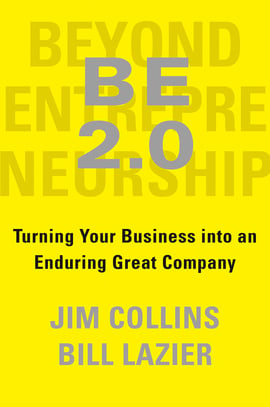 Collins explains, “This notion of paying attention to the actual tactical execution of your vision and strategy, of “tying your knots right” or “getting the words right,” is crucial to corporate greatness. You can have the most inspirational leader, the most profound vision, a brilliant strategy, and a thousand great ideas, but if you don’t execute well, you’ll never be great…..
Collins explains, “This notion of paying attention to the actual tactical execution of your vision and strategy, of “tying your knots right” or “getting the words right,” is crucial to corporate greatness. You can have the most inspirational leader, the most profound vision, a brilliant strategy, and a thousand great ideas, but if you don’t execute well, you’ll never be great…..
An Inc. magazine survey of its Inc. 500 (fastest-growing private companies) showed that 88% of CEOs attributed their company’s success primarily to extraordinary execution of an idea versus only 12% who attributed success primarily to the idea itself.
Jim Gentes, the founder of Giro Sport Design, likes to point out that he believes in vision and creativity, but that he just as fervently believes in “getting the helmets right.” He’s fond of saying, “Hey, I’m not that special. I had an idea, and I just executed that idea really well.”
Think about Walmart. Sam Walton didn’t invent discount retailing; in fact, there were many other companies trying to do the same thing in the early sixties, when Walmart was just getting off the ground. As Vance Trimble put it in his historical analysis of Walmart: The key ingredient turned out to be Sam’s masterful execution of the idea . . . Other retailers were out there trying to do just what he was doing. Only he did it better.”
 In 3HAG Way we ask our leadership teams to describe a word for Execution. The word we use is “FLAWLESS.”
In 3HAG Way we ask our leadership teams to describe a word for Execution. The word we use is “FLAWLESS.”
In Verne Harnish’s Scaling Up, the focus to do exceptionally well is great execution. Meeting Rhythms and a Cadence of Accountability focus on developing a harmonious culture of accountability.
To be truly SMaC involves four basic elements:
- Specific, replicable processes and mechanisms that create tremendous consistency.
- Checking and cross-checking systems to prevent catastrophic mistakes.
- Rigorous thinking to consider a wide range of contingencies and backups.
- The continuous evolution of SMaC based on understanding the why behind SMaC processes.
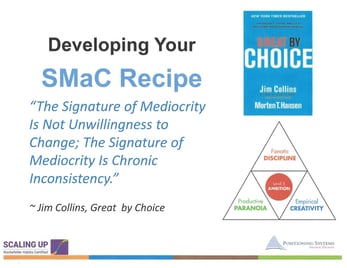 As we shared in SMaC - Still Relevant in 2020?, Change is more prevalent today. The difficulty today isn’t changing it’s choosing what to change, and what to keep the same. Without processes to follow, a discipline of how to do things right, you change for the sake of change. Do your people say, “This is the way we do it here?” or “This is why we do this here?”
As we shared in SMaC - Still Relevant in 2020?, Change is more prevalent today. The difficulty today isn’t changing it’s choosing what to change, and what to keep the same. Without processes to follow, a discipline of how to do things right, you change for the sake of change. Do your people say, “This is the way we do it here?” or “This is why we do this here?”
Why is SMaC. Why makes change practical and based on sound reasoning.
“The bulk of the causes of low quality and low productivity belong to the system [created by management] and thus lie beyond the power of the workforce.” W. Edwards Deming
 Key Function Flow Map
Key Function Flow Map
A challenge we present to our customers in the first session of 3HAG Way is to determine the key functions which bring cash into the business. We start by identifying the key functions, and who are the key people in those seats. The next step is to discover how the company makes money and delivers cash to grow the business. It’s surprising how many business leaders have never really thought this through.
Why do we do this?
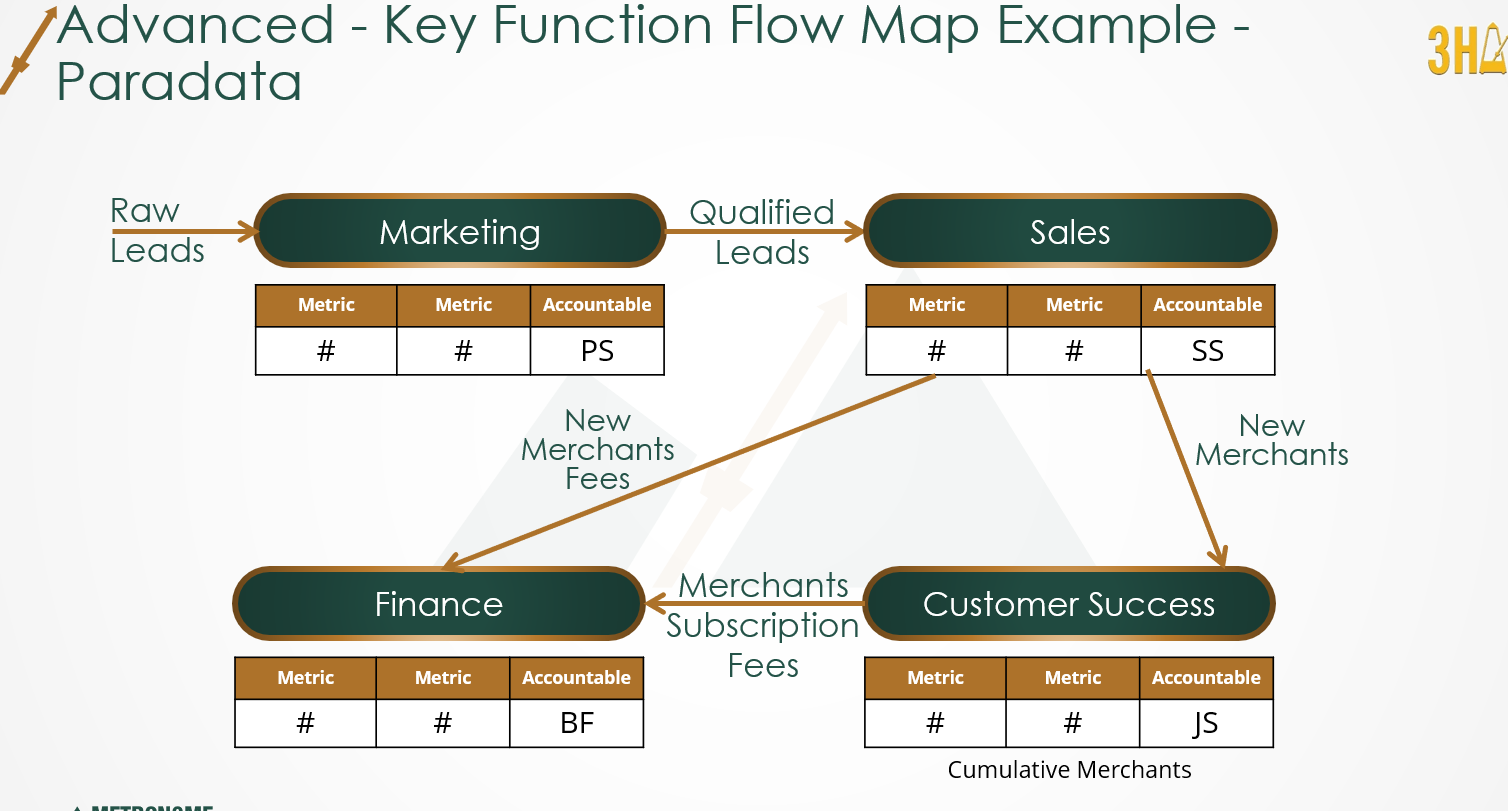 For your business to grow it needs cash, and it needs to have these functions performing “Flawlessly!” This is execution of your business at its most impactful functions. To continue to grow at scale, your business needs to understand, monitor, hold those responsible, and change, when necessary, these key functions! It’s absolutely critical you monitor these functions daily.
For your business to grow it needs cash, and it needs to have these functions performing “Flawlessly!” This is execution of your business at its most impactful functions. To continue to grow at scale, your business needs to understand, monitor, hold those responsible, and change, when necessary, these key functions! It’s absolutely critical you monitor these functions daily.
We’ll dive into the Key Function Flow Map more in a future blog.
Executing “flawlessly” requires tools to monitor your key functions, to hold people accountable, and to report the key metrics producing the outcomes your business needs to succeed.
How well is your business doing? Is it Flawless? What tools do you need to get your execution right?
To create an environment where everyone is inspired to give their best, contact us today to schedule a free exploratory meeting.
Growth demands Strategic Discipline.
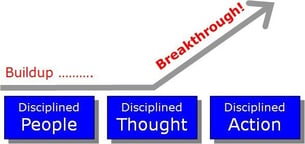 Building an enduring great organization requires disciplined people, disciplined thought, disciplined action, superior results, producing a distinctive impact in the world.
Building an enduring great organization requires disciplined people, disciplined thought, disciplined action, superior results, producing a distinctive impact in the world.
Discipline sustains momentum, over a long period of time, laying the foundations for lasting endurance.
-2.jpg?width=297&name=3%20Disciplines%20of%20Execution%20(Strategic%20Discipline)-2.jpg) A winning habit starts with 3 Strategic Disciplines: Priority, Metrics and Meeting Rhythms. Forecasting, accountability, individual, and team performance improve dramatically.
A winning habit starts with 3 Strategic Disciplines: Priority, Metrics and Meeting Rhythms. Forecasting, accountability, individual, and team performance improve dramatically.
Meeting Rhythms achieve a disciplined focus on performance metrics to drive growth.
Let Positioning Systems help your business achieve these outcomes on the Four most Important Decisions your business faces:
|
DECISION |
RESULT/OUTCOME |
|
PEOPLE |
|
|
STRATEGY |
|
|
EXECUTION |
|
|
CASH |
|
Positioning Systems helps mid-sized ($5M - $250M) business Scale-UP. We align your business to focus on Your One Thing! Contact dwick@positioningsystems.com to Scale Up your business! Take our Four Decisions Needs Assessment to discover how your business measures against other Scaled Up companies. We’ll contact you.
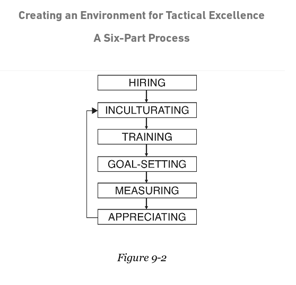 NEXT BLOG – Five Conditions Under Which People Execute Well
NEXT BLOG – Five Conditions Under Which People Execute Well
In Bringing Out the Best in People, Aubrey Daniels points out, “Every company is getting the performance it should be because it’s reinforcing that performance with what it is currently doing. We shared this in Why Is Your Business The Way It Is? The Power of Habit. In BE 2.0 Collins provides 5 conditions in which your people will execute well. Be here next blog to understand what conditions your business needs to improve.
Your blog post content here…






.jpeg?width=150&height=135&name=Hand%20with%20marker%20writing%20the%20question%20Whats%20Next_%20(1).jpeg)

